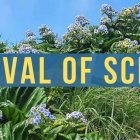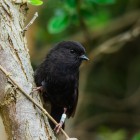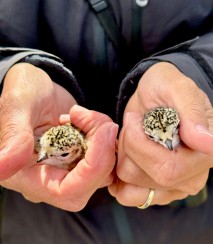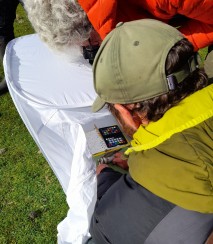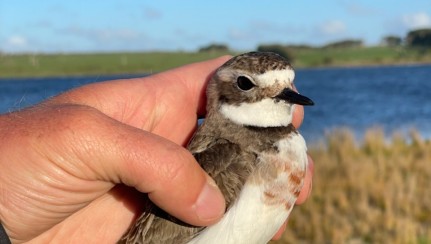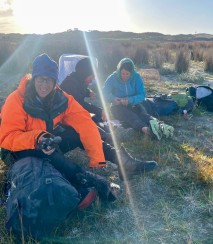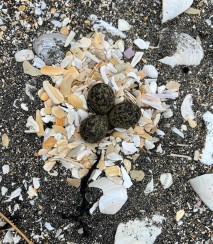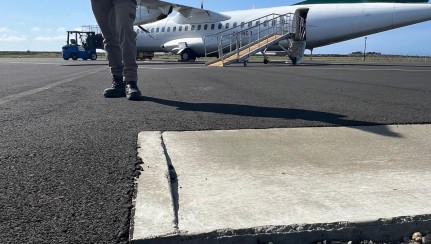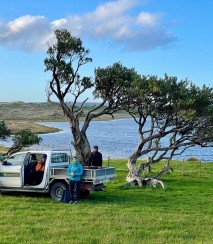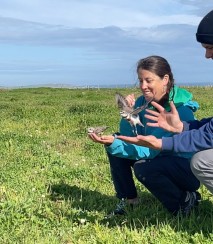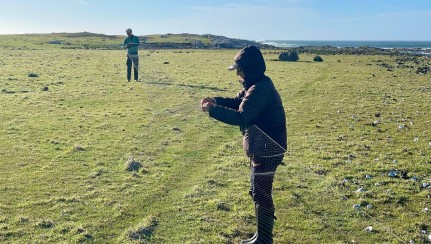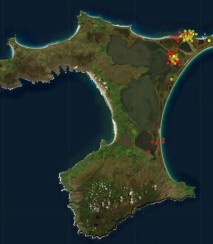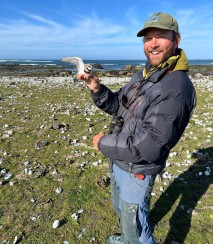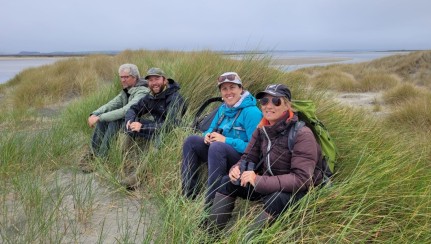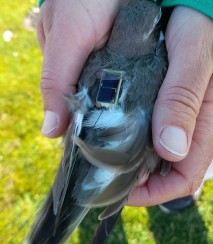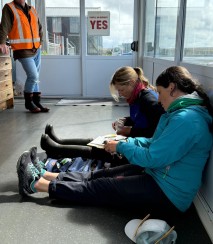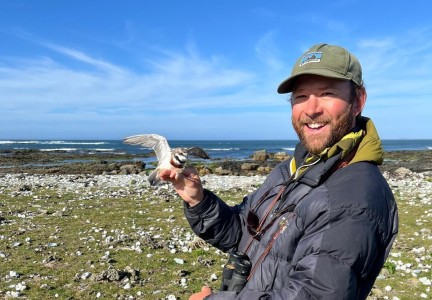
Blog and news
Banding dotterels in the Chathams – the field
The pohowera/banded dotterel research team share their unique five-day experience on the Chatham Islands, gathering data about the islands’ small population of these small shorebirds.
Read the first blog about this research.
As our plane landed and taxied along the Chatham Islands runway, we looked out the window. The first thing we saw was a female pohowera/banded dotterel sitting on a nest, with one egg! Fantastic start to the trip.
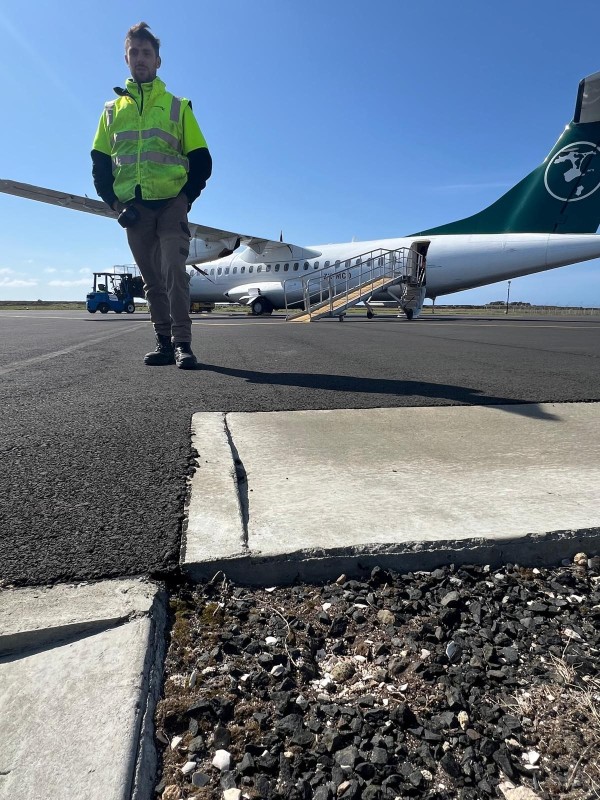
Our first nest of the Chatham Island expedition directly beside the tarmac. Image: Bart Kempenears.
After a brief tour of Levi Lanauze’s shearers quarters in Kaingaroa (our home for the week), we were escorted out to Okawa Point for an introduction to the persistent shrill of the ocean wind and a small congregation of banded dotterels scurrying amongst the thousands of paua shells strewn over the paddock. Levi is the farm manager for Hokotehi Moriori Trust, as well as Co-Chair of the Chatham Islands Landscape Restoration Trust.
After acclimatising to island life, we headed back out to Okawa Point and caught our first Chatham Island banded dotterels. We worked at Okawa Point for two days, deploying two satellite tags on a breeding pair flagged as “HK” and “H1”, and colour-banding three other breeding adults.
On our third day we headed out to the mouth of Te Whanga lagoon.
“You’ll probably get stuck,” they told us, “but no worries, there’ll be a guy with a tractor working nearby”.
Our ute got stuck.
There was no guy with a tractor.
Fortunately, news gets around the Chathams faster than a weka can cross the road – so help arrived (big thanks to Duncan Ryan!) and we were soon hoofing it back to Kaingaroa with our tails between our legs.
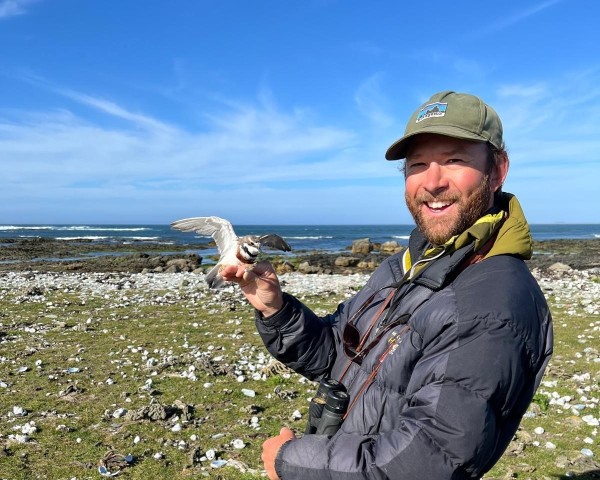
Luke Eberhart-Hertel with a newly colour banded Banded Dotterel at Okawa Point. Image: Bart Kempenears.
The next day Levi offered us two side-by-sides and Dan Schaap kindly escorted us to the Mouth. The side-by-sides were more rugged, more fun, and…we made it! We found a nest on the sand beautifully lined with golden shells, so we popped some bands on the parents and left them to incubate their soon-to-hatch three-egg clutch. We banded up a few more adults tending chicks on the shores of Te Whanga Lagoon, then headed back to the shearers quarters.
After a rainy-day pause in our fieldwork (during which we feasted on black swan eggs and paua harvested by Levi), we returned to the airport and waited until the Air Chathams flight to Auckland departed so that we could scan the tarmac for dotterels. The one-egg nest we found when we first arrived now had three eggs, and we successfully banded both parents. Due to the strong Chatham breeze, we had the unique opportunity to band the birds in the shelter of the ‘control tower’ of the airport under the supervision of Joe Breeze. We then caught another pair and three young chicks just outside the airport fence.
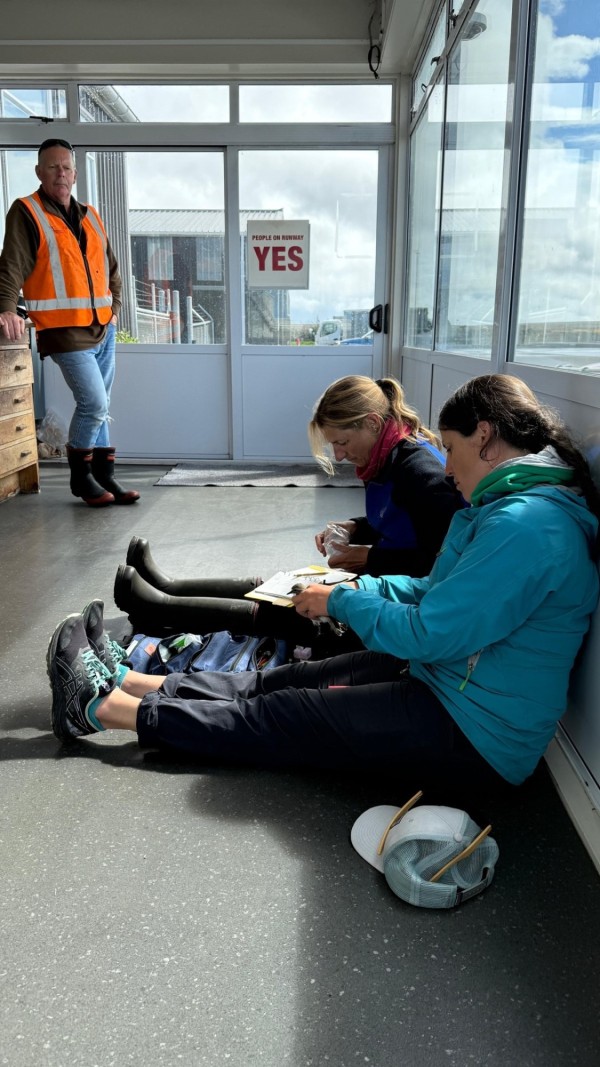
Kim and Katie Gray processing Banded Dotterels in the control tower of the Chatham Island airport while Joe Breeze oversees. Image: Luke Eberhart-Hertel
As mentioned earlier, news gets around fast on the Chathams, so we were soon informed of a banded dotterel at Lake Marakapia (thanks Lori Albert!). Sure enough, we found a curious nest with four eggs (banded dotterels usually have only three), and we banded the parents.
We wrapped up our Chathams’ trip the morning before our flight with a quick dash out to a paddock on Kaingaroa Road, where Levi helped us band two more adults.
Overall, we found four nests with a total of 13 eggs, and banded 19 adults and four chicks at five locations on Chatham Island. There is no way we could have done this without the kind help of the locals. Their knowledge about the whereabouts of the dotterels certainly impressed us.
On departure day, while waiting for our delayed flight (to quote Levi, “You haven’t experienced the Chathams if you haven’t had a delayed flight”), a warm, contented feeling swept over our team as we watched the female dotterel, wearing her new leg bands, on the corner of the tarmac snuggling down with her three downy chicks.
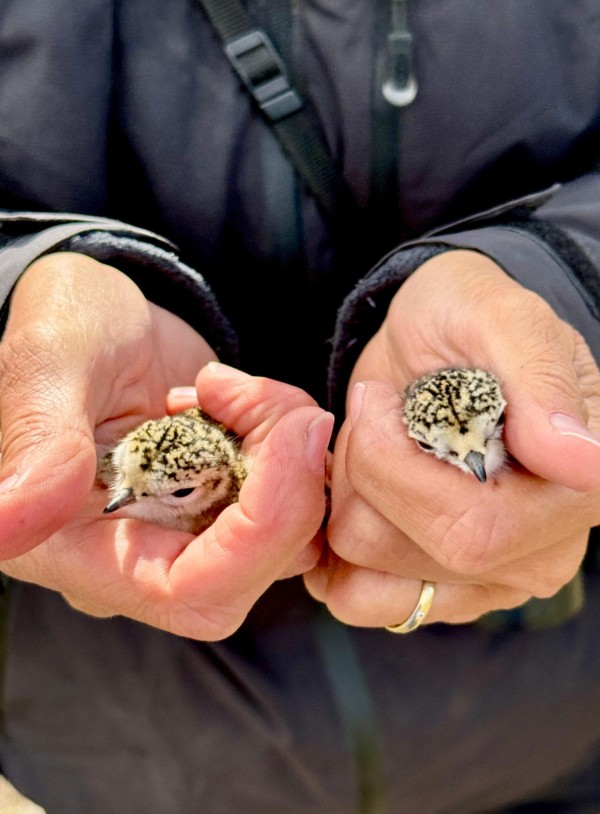
Two sibling banded dotterel chicks banded at the Chatham Island Airport. Image: Peter Mombaerts
Be part of this research
Your observations are a vital part of this research.
By reporting sightings of marked banded dotterels, on the Chathams and elsewhere in New Zealand, you will contribute directly to tracking their movements, understanding their behaviour, and informing conservation efforts.
Look out for individuals with a unique combination of four coloured bands or an engraved leg flag (see example photos) and share your sighting details with us. If you observe a marked bird, please send us the location, time and date, and the colour-combination (read as “upper left, lower left, upper right, lower right”; see figure 9 for example) or flag code (two character alphanumeric eg H1), to b.dot.resighting@doc.govt.nz. If you are a FALCON user, please enter your sighting in there also.
In return, you will receive details about the bird’s history and movements, along with an annual update on the project’s progress. Thank you for your support in advancing our understanding of their migration. If you have any questions, please do not hesitate to contact us.
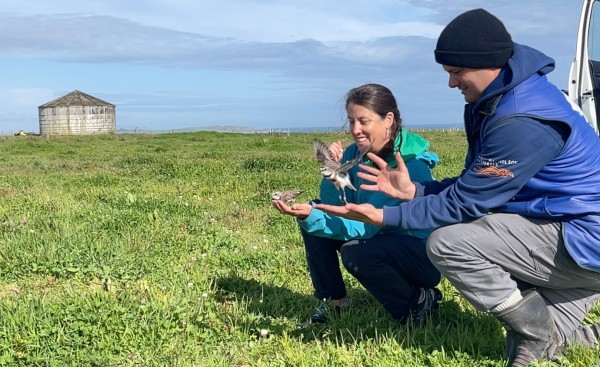
Levi and Katie releasing a pair of colour banded banded dotterels near Kaingaroa. Image: Luke Eberhart-Hertel
Learn More
Thank you
A special thank you goes out to Levi and Tessa Lanauze who provided us with a great deal of support, including accommodation, food, land access, local knowledge, and island stories. We are very grateful for the assistance and local knowledge of Dave Bell, who guided us and tapped into his vast network of conservation enthusiasts on the Chats to help direct us to the best locations.
This work wouldn’t have been possible without the generosity of Gary and Eileen Cameron, Vin Tuuta, and the Hokothehi Moriori Trust, who provided us land access to important banded dotterel breeding sites.
We also thank Mike Bell for his generous and encouraging logistical support in the lead up to our arrival on the Chats. And we thank Lori Albert, Dan Schaap, Duncan Ryan, and Joe Breeze for their assistance in our daily activities such as pulling us out of the mud, guiding us in the side-by-sides, pointing us to good habitat, and letting us convert the airport’s control tower into a temporary bird banding station.
From DOC we are grateful for the logistical support of Dave Houston, Briggs Pilkington, Gemma Green, Paul Gasson, and Erin Patterson.
Read the first part of this blog, Banding dotterels in the Chathams - the science.

